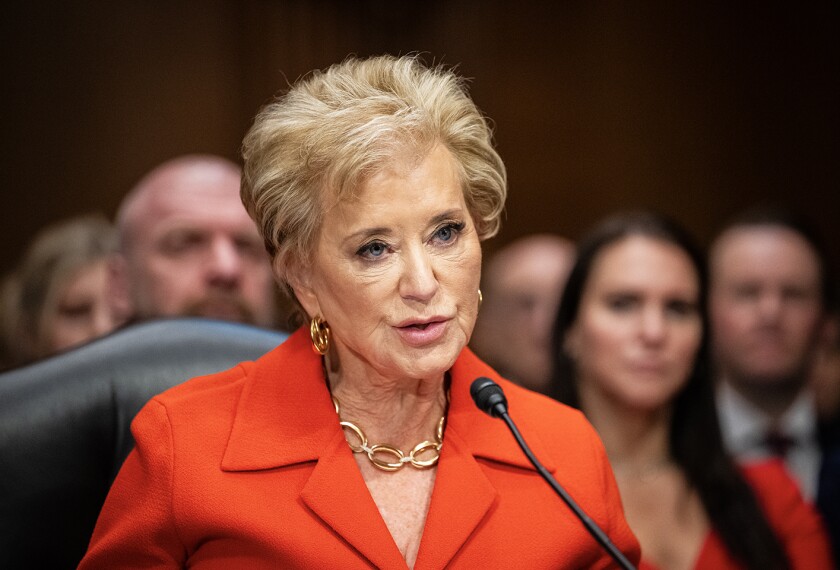By July 7, all states had to submit revised plans to the federal government detailing what they plan to do during the coming school year to meet the teacher-quality requirements of the No Child Left Behind Act. Their plans were to include specific steps they will take to ensure that poor and minority students are not taught by inexperienced, unqualified, or out-of-field teachers at higher rates than other children.
But a study released July 6 by the Citizens’ Commission on Civil Rights, a watchdog group based in Washington, cautions that most states so far have made only minimal progress in addressing the teacher-quality provisions, particularly the teacher-equity requirements, which the group says have been poorly enforced by the federal government.
“Days of Reckoning: Are States and the Federal Government Up to the Challenge of Ensuring a Qualified Teacher for Every Student?” is available from the Citizens’ Commission on Civil Rights.
The report, “Days of Reckoning: Are States and the Federal Government Up to the Challenge of Ensuring a Qualified Teacher for Every Student?,” is based on an analysis of site reviews the Department of Education conducted in 40 states, starting in mid-2004, to determine whether states were complying with the law’s teacher-quality provisions.
“While inconsistent in depth, these site-visit reports found a broad span of problems with how states were implementing the teacher-quality and -equity provisions of the law,” authors Phyllis McClure and Dianne M. Piché write. “They found that teachers in many states were being classified as ‘highly qualified’ based on criteria that did not match what the federal law required. Longtime teachers were simply treated as ‘highly qualified’ because of their seniority. Veteran teachers were deemed ‘highly qualified’ based on insufficient evidence of subject-matter knowledge. States’ report cards did not include all required data about teachers.”
Equity a Weak Spot
Equally troubling, the study found, the federal monitoring reviews did not seem to give any special attention to the inequitable distribution of teachers—an issue that Secretary of Education Margaret Spellings recently highlighted as one of the four core issues by which a state’s compliance with the law would be judged.
“It’s obvious that a major cause of the student-achievement gap is the teacher-quality gap,” said Ms. Piché, the executive director of the commission. “We know that the major in-school or educational variable influencing student achievement has to do with the quality of teaching. Is it too much to ask that each child be provided with a teacher who can actually teach him or her to read and do math?”
The study found that some reviews contained no information on how states were addressing the equitable distribution of teachers. Other monitoring reports did not provide any indication of the quality or the comprehensiveness of the state’s equity plan, “merely that it existed and met the minimum statutory requirement.”
“The standards for measuring these teacher-equity plans were superficial,” according to the study, “and neither states nor the department have produced teacher-equity plans for public review,” despite the fact that the first such plans were submitted to the federal government in 2002.
Of the initial 31 monitoring reviews conducted, the study found, the teacher-equity provision was mentioned in 14 of them: Arkansas, Delaware, Hawaii, Iowa, Montana, Nebraska, Nevada, New Mexico, North Carolina, North Dakota, South Dakota, Vermont, Utah, and Wyoming.
In 13 states, the equity plan was mentioned and the state was considered to have met the requirement: Alaska, Arizona, California, District of Columbia, Georgia, Louisiana, Maine, Michigan, Mississippi, New Jersey, New Hampshire, South Carolina, and Washington state.
Nine state reviews asked about teacher equity and cited the state for having no plan: Illinois, Ohio, Oregon, Tennessee, Connecticut, Florida, Idaho, Missouri, and Pennsylvania.
Another critical but frequently missing piece, according to the site reviews, was whether the state had met the requirement for a statewide plan with annual targets and percentage increases in the proportion of highly qualified teachers in each district and school in the state.
Penalties Urged
The commission urged the Education Department to post on its Web site the state teacher-equity plans that were reviewed by its staff in connection with the site visits, as well as each state’s revised teacher-quality plan.
All self-reported data from states and school districts should be subject to verification and audit, it suggests, with the department’s office of inspector general spot-checking data submitted by the states. States found to have submitted incomplete, inaccurate, or fraudulent data should be penalized, the report said.
It also advocates that, in reviewing teacher-equity plans, the department use a “familiar and time-tested standard” of producing a plan “that promises realistically to work now.”
And it urges the department to begin imposing sanctions—including the withholding of money or other legal actions—against states that cannot demonstrate full compliance with the teacher-equity provisions of the law, including states that did not submit detailed equity plans by July 7, are not making significant progress in closing the teacher-quality gap both within and across districts, or do not demonstrate a probability of taking effective steps to remedy inequities in the distribution of teachers during or before the end of the 2006-07 school year.




